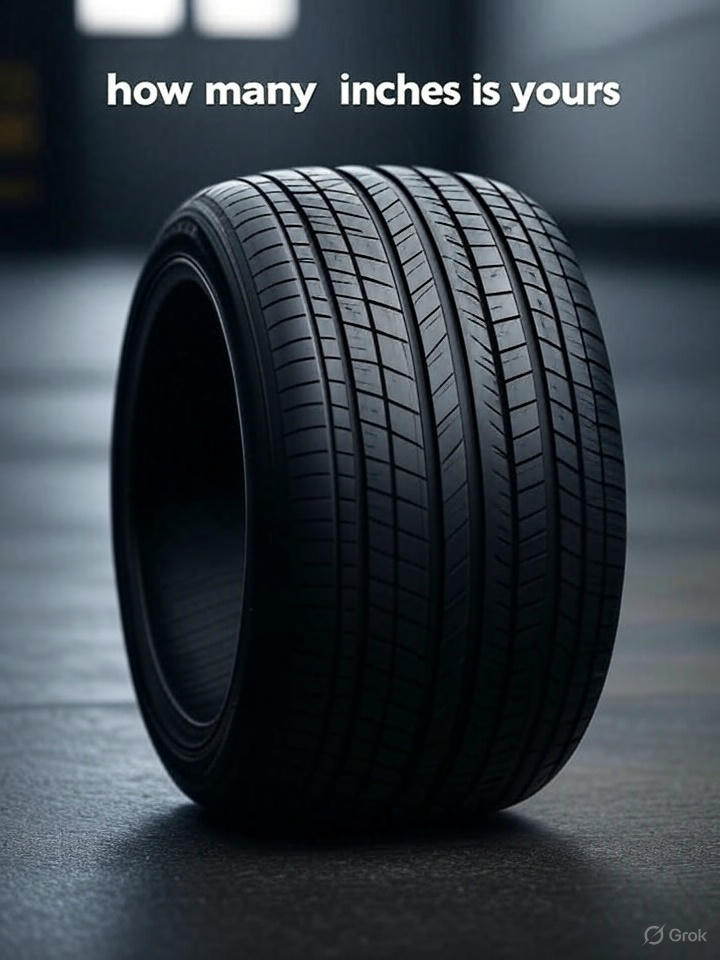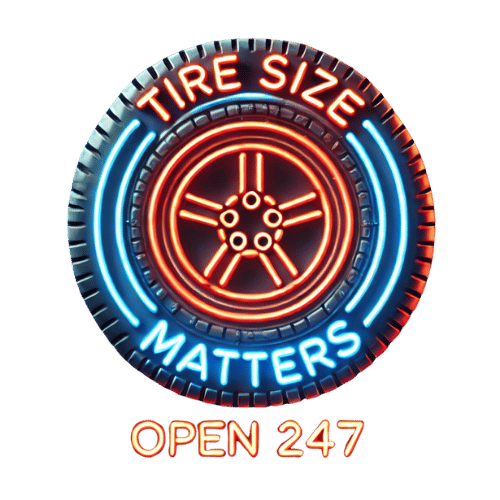A Complete Guide to Finding Your Tire Size
When it’s time to buy new tires, one of the most common questions is: “How many inches is my tire?” Knowing your tire size is crucial for safety, performance, and compatibility with your vehicle.

In this guide, we’ll explain where to find your tire size, how to read it, and what each number means—ensuring you choose the right tires every time.
Where Can You Find Your Tire Size?
Your tire size is printed in several places:
1. On the Sidewall of Your Current Tire
The easiest way to find your tire size is by checking the sidewall of your existing tire. Look for a code like this:
Example: P215/65R16 95H
This alphanumeric code contains all the details about your tire’s dimensions and specifications.
2. In Your Vehicle’s Owner’s Manual
If you don’t have access to your tires (or they’re worn out), check your car’s owner’s manual. Manufacturers list the recommended tire size in the “Tires” or “Specifications” section.
3. Inside the Driver’s Door Jamb
Open your driver’s side door and look for a sticker on the door frame. This sticker often includes:
- Recommended tire size
- Proper tire pressure
- Vehicle weight limits
4. In the Glove Compartment or Fuel Door
Some cars have tire information inside the glove box or even on the fuel filler door.
5. Online (Using Your License Plate or VIN)
If you’re unsure, many tire retailers and auto parts websites allow you to enter your license plate number or VIN to find the correct tire size.
How to Read Tire Size Numbers
A standard tire size looks like this: P215/65R16 95H
Let’s break it down:
| Code Part | Meaning | Example (P215/65R16 95H) |
| P | Tire Type (Passenger Vehicle) | P = Passenger Car |
| 215 | Tire Width (Millimeters) | 215 mm wide |
| 65 | Aspect Ratio (Sidewall Height %) | 65% of width |
| R | Construction (Radial) | R = Radial Tire |
| 16 | Rim Diameter (Inches) | Fits 16-inch wheels |
| 95 | Load Index (Weight Capacity) | 95 = 1,521 lbs max |
| H | Speed Rating (Max Speed) | H = 130 mph |
Key Takeaways:
- Width (215): Measured in millimeters.
- Aspect Ratio (65): Sidewall height as a percentage of width.
- Rim Diameter (16): The wheel size in inches (this is the “how many inches” part).
- Load Index & Speed Rating: Ensure your tires can handle your car’s weight and speed.
Why Does Tire Size Matter?
Choosing the wrong tire size can lead to:
- Poor handling & safety risks
- Incorrect speedometer readings
- Reduced fuel efficiency
- Voided warranties
Always match the manufacturer’s recommended size unless you’re upgrading wheels (in which case, consult a tire expert).
FAQs About Tire Sizes
1. Can I Use a Different Tire Size Than Recommended?
Yes, but only within manufacturer-approved ranges. Check your manual or ask a tire specialist.
2. Do Bigger Tires Improve Performance?
Wider tires may improve grip, but they can also reduce fuel efficiency. Always balance performance needs with practicality.
3. Where’s the Best Place to Buy Tires?
- Online retailers (TireRack, Amazon)
- Local tire shops (Discount Tire, Firestone)
- Dealerships (For OEM-specific tires)
Final Tip: Double-Check Before Buying!
Before purchasing new tires, always:
✔ Verify the size on your sidewall or door jamb.
✔ Compare prices online for the best deals.
✔ Consult a mechanic if unsure.
Now that you know “how many inches” your tire is, you can shop confidently!
